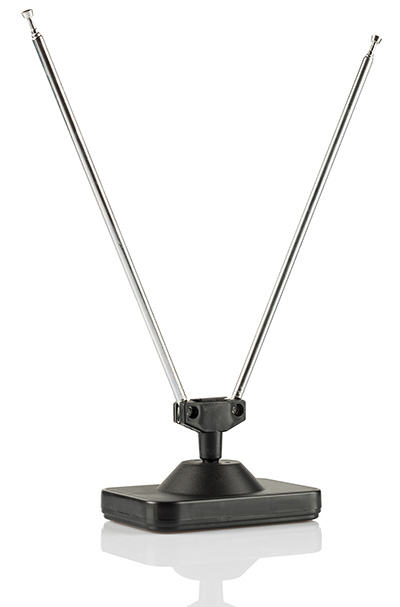EMC Question of the Week: February 21, 2022

The "rabbit ears" antenna shown in this figure is
- a dipole antenna
- two monopole antennas
- a horn antenna
- a phased array
Answer
The correct answer is “a.” The two extendable "rabbit ears" are the two elements of a tunable dipole antenna. Years ago, these antennas were commonly used for VHF reception in portable analog televisions. They are narrowband antennas with a resonant frequency that depends on the length and orientation of each element. Adjusting the elements can also change the input impedance, electrical balance and (to some degree) the antenna's direction of maximum gain.
Of course, the figure doesn't indicate how each of the elements is driven, so the correct answer hinges on the common definition of a "rabbit ears" antenna. In principle, one could drive each element relative to a common ground like two monopole antennas. They could even be driven with a specific phase relationship to form a two-element phased array. Neither of these scenarios are likely however, given the close proximity of the two elements near the base relative to their length.
For EMC troubleshooting, a set of rabbit ears can be helpful when trying to detect a distant source of radiated emissions at one particular frequency. They are relatively lightweight, inexpensive and portable. Their narrow bandwidth helps to maximize the signal-to-noise ratio, and their non-uniform antenna pattern can help to identify the source direction.
Have a comment or question regarding this solution? We'd like to hear from you. Email us at
